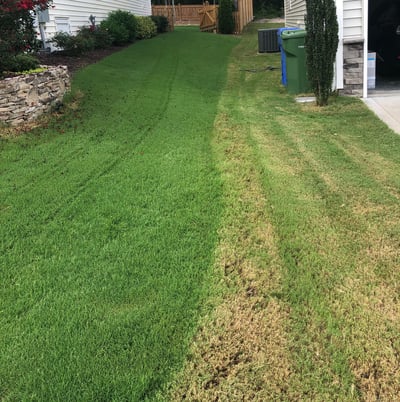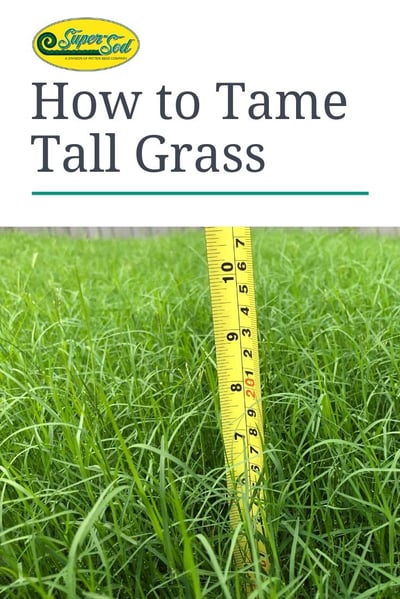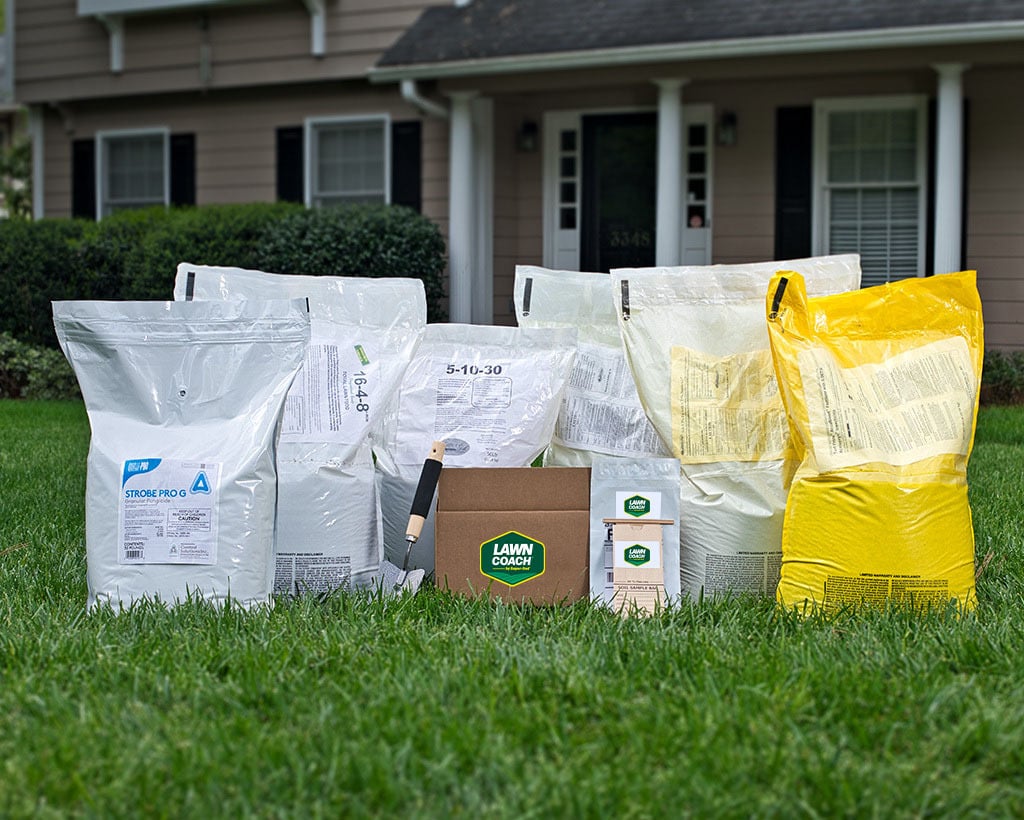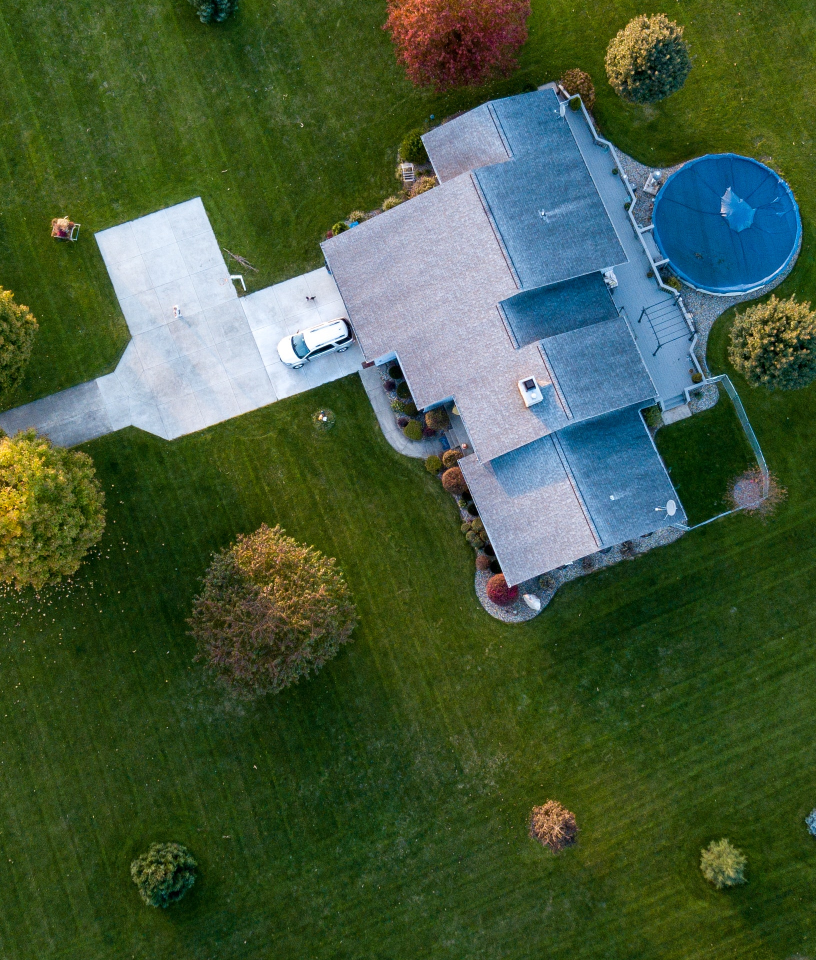

Get Your Overgrown Lawn Back to the Correct Mowing Height
Have you ever gone on summer vacation and returned to a garden that’s become a jungle, featuring a wild lawn?
Sometimes you don’t even need to go on vacation - you just get too busy and miss a week mowing. All it takes are a couple of decent rains while you’re not paying attention and a lawn will outpace you. It’s happened to all of us.
Here’s What to do if Your Grass Gets Really Tall
By “really tall”, we mean double or more what it should be. For example, if you have a Zoysia lawn that you diligently keep at 1.5 inches tall but it’s grown to 5” tall (gasp!), don’t panic!
The problem with too-tall lawns is that the growing tip is now higher up, so if you mow at your regular height you'll scalp the lawn causing it to turn an unattractive brown.

Follow these steps to slowly tame the height while avoid scalping (as much as possible):
- Sharpen up: Make sure your mower blades are sharp. This first step is important. Sharp blades give a clean cut and reduce stress.
- Follow the rule of thirds: Keep in mind our mowing maxim and never mow off more than 1/3 of a grass blade at a time.
- Adjust your mower: Applying the 1/3 rule to fix your overgrown lawn means you’ll have to set your cutting height higher than usual. Most mowers can accommodate a maximum cutting height of 3.75” to 4”.
- Mow off 1/3: Using the example above, if the lawn is 5” tall, raise your cutting height so the mower takes off only 1.5 inches of grass. That will put your lawn at 3.5 inches tall.
- Find the Growing Point: After you've decided what height to set your mower, inspect your grass to find the growing points. If the average growing point height is above the mower height setting, keep in mind that you may scalp your lawn. Perhaps raise the the mower height to above the growing point for your first pass over the lawn.
- Bag your clippings: If you usually leave your clippings on the lawn so that they can cycle nutrients back into the soil, you need to skip leaving them until you make it to Step 9. The long grass clippings will clump up and shade out your growing turf. Once you are back to a regular mowing height and schedule, you can resume leaving your clippings.
- Wait 2-3 days: Allow a few days to let the grass recover and get over the surprise of having 1/3 of its foliage sliced off (possibly scalped some too). It will regrow a little during this time. Don’t wait the normal interval you usually wait between mowing sessions.
- Mow off another 1/3: Adjust your mower cutting height and mow again. This should get you much closer to your end goal – in this case you will now be at 2.5” tall and close to your 1.5 inch target.
- Repeat one more time: Wait a few more days and mow again, this time resetting your mower to its normal setting.
- Resume regular mowing at the correct interval for your lawn.
With these 10 steps, you’ve tamed your tall grass. These tips apply to all lawns, both warm season and cool season.
More About Lawn Scalping
Keep in mind that if your lawn gets too tall and you're trying to reset it, some scalping is inevitable.
Scalping occurs when the grass is mowed so short that the blade is cut at or below its growing point, also known as the crown. The taller the grass blade, the higher this growing point is located. When you cut off the growing point, the grass often turns partially or entirely brown. Simply put, scalping is when you mow off the growing point.
Take heart that warm season lawns generally recover from scalping, given a little extra fertilizer, water, and patience. If you scalp Tall Fescue, you may have to reseed in the fall to recreate a lush lawn.
Become an expert in scalping (or not scalping) when you read our article: Stop Accidental Scalping With 5 Mowing Hacks
Ways to Prevent Grass Getting Too Tall
1) Keep Up Good Habits
We blog a lot about good mowing habits and the benefits of sticking to them. Regular mowing at intervals suitable to your type of lawn is all it takes. Put mowing on your calendar or set alerts on your phone.

2) Add Mowing to your Vacation Planning List
If you’re going on vacation, mow the day or even the night before you leave.
For lawns that grow slower such as Centipede (with a mowing interval of 10 to 14 days) or Zoysia (with a mowing interval of 7 to 10 days), this technique will work well for you.
With Bermuda and Tall Fescue, you’ll definitely have to follow the 9 steps detailed above even if you mow the day before you leave. These rapid growers need to be mowed on 3 to 7 day intervals, depending on time of year and amount of water or rain.
3) Be Neighborly
A neighborly method is to ask your neighbor to mow your lawn while you're away. My former neighbor and I would mow each other's lawn when we mowed our own. However, we had different types of grass so we would switch and use the mower that went with the lawn, rather than just keep mowing with our own mower.

4) Get a Robotic Lawn Mower
The end game is lawn automation with robotic lawn mowers. With a robot, you can go on vacation and it will continue to mow every day, keeping your lawn at the exact height you want it.
That’s a checkmate on your too-tall grass and one less thing to do when you get home from your vacay. Robots don't take vacations!
Your robotic mower will cut your grass every day while you are gone, so you'll feel like you're returning home to your own paradise.
An Ounce of Prevention is Worth 9 Steps of Cure
Weighing the 10 steps to fix the problem in one hand, with the 4 preventative measures in the other, save yourself some time and put the regular preventative mowing steps in place for your next vacation.
Any questions about this technique? Please leave your comments below and we'll answer them as soon as we're done mowing the lawn.






